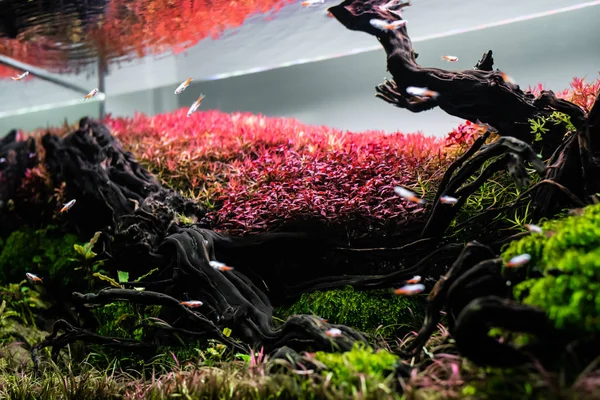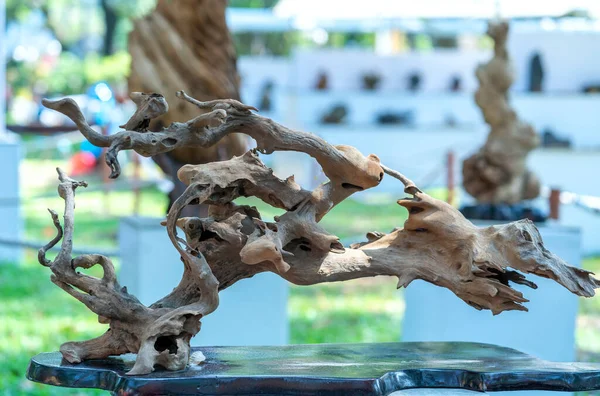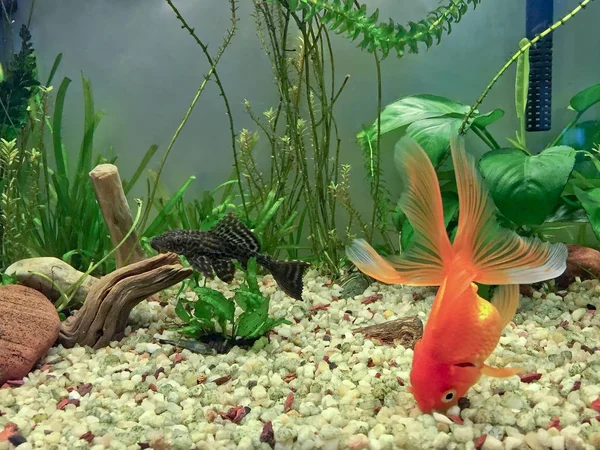Are you looking to get driftwood to use in your aquarium and wondering why it’s so expensive? Do you need driftwood for your aquarium, and you’re wondering how to get some?
In this article, I’ll review why driftwood is so expensive and why it’s worth the cost.
Reasons Why Driftwood So Expensive?
Setting up a new tank requires getting the necessary supplies, including driftwood. However, buying driftwood for your aquarium can be expensive.
Below are some of the reasons why aquarium driftwood is so expensive:
Reason #1: Preparation Process
Preparing driftwood for use in aquariums doesn’t come cheap. There are many lengthy processes involved that increase the ultimate price of driftwood.
Although it might resemble regular wood, it’s actually not the case because of the specific process involved:

The first step in the preparation process is for sellers to carefully select the right piece of aquarium driftwood.
Then they proceed to cut the wood into various sizes and shapes.
The curing process is necessary to eliminate dirt, bacteria, algae, and other elements that might adversely affect tank water quality.
The wood is cured through smoking and boiling to remove tannins that can impact the chemistry of the aquarium water.
This process might last from several weeks to months. The labor involved is a primary factor in the high price of driftwood.
Reason #2: Shipping Costs
Another reason why aquarium driftwood is so expensive is the high cost of shipping and handling.
Driftwood is heavy, and buying driftwood for large aquariums can be costly due to weight-related shipping costs, especially if the shipment is going to different destinations around the world.

In fact, it’s not surprising to see that the cost of shipping driftwood pieces could be as much as the price of the driftwood itself.
For example, a decent size of aquarium driftwood could sell for $50, and the shipping and handling costs could be easily as much. Now imagine how expensive it would be to ship large pieces of driftwood for bigger aquariums.
Even smaller pieces of driftwood will weigh enough to significantly increase the price. The seller transfers the handling and shipping costs to the buyer, which translates to expensive driftwood.
=> Check Driftwood Prices Here
Reason #3: Supply And Demand
The laws of supply and demand for driftwood also determine the high costs of driftwood.
There isn’t enough global supply to match the millions of driftwood pieces sought by many aquarium owners for their tanks.
Ultimately, as it plays for any commodity on the market, increased demand for driftwood will limit supply and, in the long run, result in rising prices.
The rarer it is to get quality aquarium driftwood, the more expensive it gets, as the seller exploits the situation and charges a premium price.

It’s all about prices rising from limited competition (one of the primary laws of economics).
It explains that although there are quite a few sellers of aquarium driftwood in the market today, the supply simply can’t keep up with the demand for this essential element of any standard aquarium.
Reason #4: The Willingness Of People To Pay For Aquarium Driftwood
There’s a slight relationship between the point mentioned above and this reason, although this leans more toward the supply side of the equation, as suppliers will be willing to sell at high prices as long as people are willing to pay.
However, the difference is that this edges more toward the demand side of driftwood.
There’s an almost abnormal demand curve for driftwood since buyers are willing to buy this wood for their fish tanks despite outrageous prices.
Supply will most likely keep increasing the prices as long as demand is willing to pay; suppliers will keep raising prices.
To put it further in perspective, if aquarium enthusiasts are willing to buy a piece of driftwood for $50, then there’s no reason for the seller to consider charging a lower price.
And as long as demand remains hot, sellers are free to charge whatever they like for driftwood because they know they have a captive market.
Sellers will only be pushed to price reduction when buyers demonstrate an unwillingness to pay such high costs for just a small piece of wood.
Reason #5: Products Designed For Specific Niches Are Generally More Expensive
It’s also a closely economics-associated point that products explicitly designed for a specific niche are naturally more expensive than others.
In this case, aquarium driftwood is considered a luxury product as retailers are well aware that someone with a large aquarium is definitely a fish hobbyist and will most likely be willing to spend the money to purchase driftwood even at a high price simply for the comfort of their fish and the enhancement of the aquarium.
Thus, sellers have carte blanche to sell these aquarium supplies at a high price.

This is closely related to supply and demand as there are only a few driftwood sellers compared to the number of aquarium owners willing to make a purchase.
Sellers will always profit through scarcity by charging a premium for the limited available resource.
It’s an example of capitalism at its peak, with suppliers willing to exploit consumers willing to pay high prices for their specific niche product.
Reason #6: Some Types of Driftwood Are Exotic
This is another point closely related to the law of supply and demand. The more limited the supply of a type of driftwood, the higher the likelihood that sellers are willing to charge high prices for it.
The reason for the expensive nature of some brands of driftwood when compared to others is that some are quite rare and unique, such as the Manzanita and bonsai trees, to mention a few. So the rarer the driftwood, the more likely you’ll be charged a premium to obtain it.
What Makes The Driftwood so Special?
You might wonder what makes a simple piece of aquarium driftwood so expensive and why you’d have to pay such a high price for what seems like an ordinary piece of wood.
Below are some of the several benefits that make it a good investment for your aquarium.
Regulation of pH
Like most wood, driftwood contains a certain amount of tannin, which is still retained even after the curing process.

These tannins contain acidic properties that are released into the aquarium water over time and will eventually help lower the pH of the water. Certain bacteria can’t survive in an acidic environment, so if you’re interested in maintaining the proper chemistry and acid level of your aquarium water.
Beautiful Look
The presence of driftwood in your tank helps beautify the tank and gives the aquarium the look of a natural environment. Some exotic driftwood can be considered art as they are available in various sizes, colors, and shapes and serve to beautify your tank, providing the fish with ample hiding places.
Ability To Control Bacteria Level
Driftwood allows tannin to leach into your aquarium water and remove bacteria from your tank.

The acidic level of your tank is not a conducive environment for bacteria and other parasites to thrive. Keeping this special wood in your tank can help make your tank healthier and safer for your fish.
Importance Of Curing Your Driftwood
Buying uncured driftwood could be an invitation to several problems in your tank.
Prevents Rotting
The wood could rot inside your tank, and rotten wood gives off ammonia that can harm your fish. Rotting driftwood defeats the purpose of keeping driftwood in the tank in the first place.
Limits Bacteria
Putting uncured driftwood in your tank could lead to inadvertently introducing foreign bacteria that could be detrimental to the health of your fish.
Reduces Tannin
The dissipation of tannin into your aquarium water is another reason you should cure your driftwood to limit the quantity of tannin in your water.
Tannins affect aquarium water chemistry and are responsible for the change in color of your tank to yellow, which, if not controlled, could affect the ability of the plants in your water to get adequate light.
How Can You Tell Real Driftwood?

Real driftwood will have an irregular, unique, and natural look.
The first step in identifying natural driftwood from fake wood is visual. Fake driftwood looks plainer and tends to give off a faux wood appearance.
You can also tell real driftwood by touch. Genuine driftwood will have natural roughness, while fake driftwood is smoother to the touch.
Finally, you can tell by the odor. Natural driftwood gives off an earthy scent, while fake driftwood has a plastic odor that would be hard to miss in aquarium water.
Conclusion
The presence of driftwood in aquarium water has numerous benefits, which continuously increase its demand by fish hobbyists.
The high demand for exotic wood has led to the expensive nature of the wood.
The price isn’t expected to fall anytime soon as current demand exceeds supply, thereby keeping prices high for consumers.
Related Reading:
- Excellent Gifts For Aquarium Lovers
- How Do You Keep Floating Plants Away From Filters?
- How Long Can Fish Survive Without a Filter?

